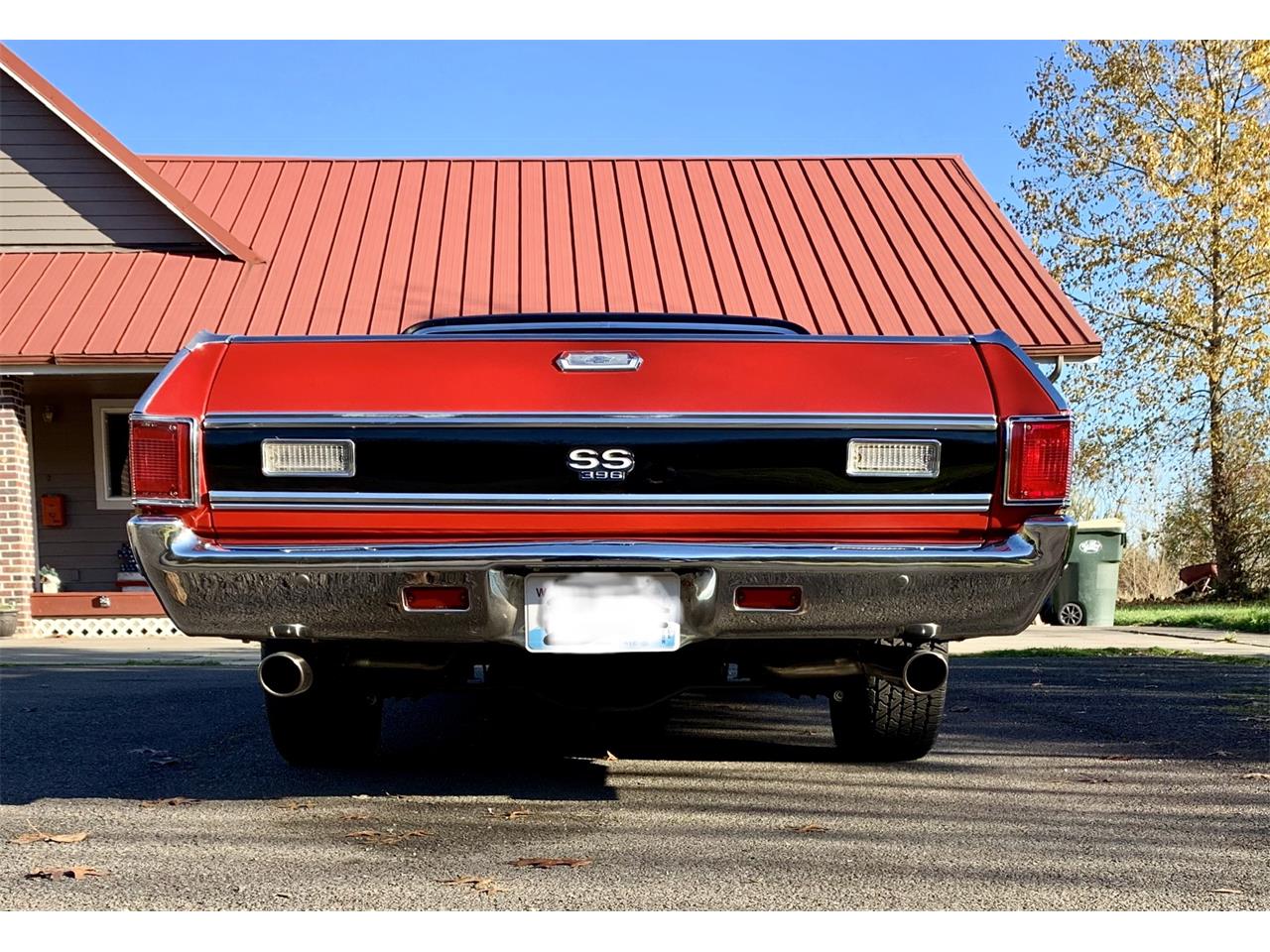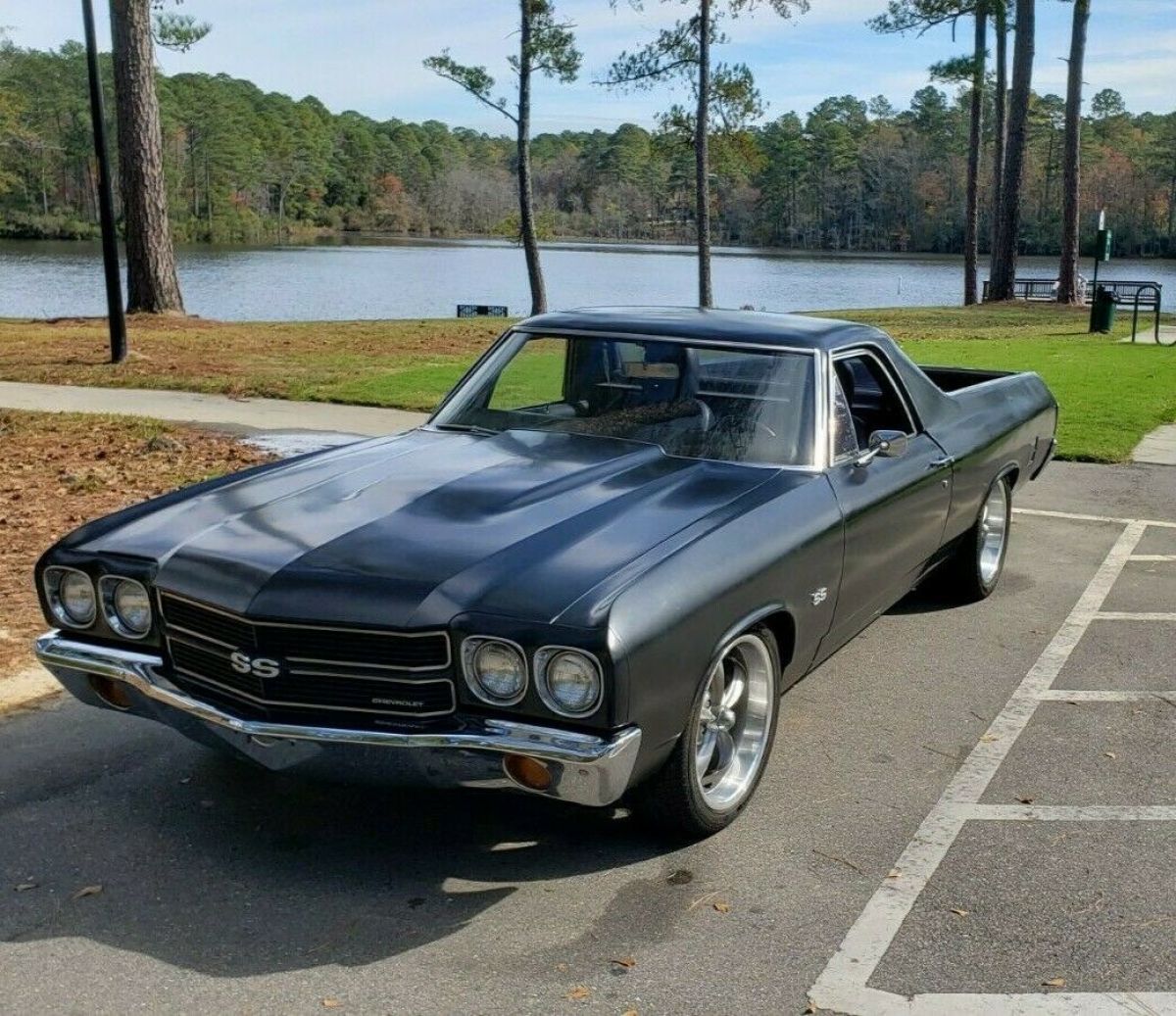
Third Generation (1968 - 1972)Ī 1968 El Camino SS 396 via Wikimedia Commons.
#1970 el camino drivers
Air shocks were also incorporated, which allowed drivers to compensate for heavy loads. This comprised of a new front bumper, grille, and trim. This trend of growing engines continued over the next few years, culminating in a 396 V8 big block rated up to 375 hp.Ĭertain Chevy models received a refreshed design in 1967, the El Camino included. The second-generation variant leaned more toward practicality but also had the option of packing a 327 cubic inch small-block V8 rated up to 300 hp in 1964.Ī year later, a performance version of the V8 was available that pushed it up to 350 hp. With the Ranchero still selling well, Chevy brought back the El Camino on the proven Chevelle platform. It could have been the new flamboyant wings of full-sized Chevys or perhaps the Ranchero's hefty stake in the market, but after just 2 years and 36,409 El Caminos produced, Chevy dropped the ax on the model. The El Camino was built on a modified Brookwood station wagon platform. GM flirted with coupe-type trucks such as the Chevrolet Cameo Carrier and the GMC Suburban Carrier in 1955, but they went all-in with the El Camino for the 1959 model year. The El Camino was a direct challenge Ford's Ranchero, a utility coupe dominating a previously untapped market. Is it a truck, or is it a car? We'll try to answer that question in this post. Perf.In the history of the automotive world, no car has evoked the existential stoicism of the Chevy El Camino. In., 2-bbl carburetor - 250 HPĮngine - V8, 350 Cu. Special Hi Performance - 450 HOĮngine - V8, 350 Cu. In., 4-bbl carburetor - 330 HPĮngine - V8, 454 Cu. In., 2-bbl carburetor - 265 HPĮngine - V8, 400 Cu.


Special Performance Front and Rear SuspensionĮngine - V8, 400 Cu. Special Front and Rear Suspension (13680) Sport Stripes - Sport Coupe/Convertible (13680)
#1970 el camino generator
Rear Compartment Lid Release - Electric ControlĢ front & 2 rear color-keyed floor mats (13680)Īir Conditioning - Four Season (Includes 61-amp generator & HD radiator) (coupe or sedan w/ bench, 6 seat & 2 shoulder) (13680)Įlectric Door Locks (coupe & convertible) (sedan)įront Seat Electric Control - 4 Way Bucket (coupe or sedan w/ bench, 6 seat & 2 shoulder) Seat Belts & Front Shoulder Harness - Deluxe Buyers who wanted more power could opt for a V8.Ībout 48,000 1970 Chevrolet El Caminos were produced. Base power was produced by a six-cylinder engine. To complement the wide variety of available colors were the available drive train combinations that could be opted for. Vinyl tops were available in White, Black, Dark Blue, Dark Gold, and Dark Green.


The buyer could have ordered a number of different El Camino exterior colors including Classic White (White), Cortez Silver (Silver), Shadow Gray (Gray), Tuxedo Black (Black), Astro Blue (Medium Blue), Fathom Blue (Dark Blue), Misty Turquoise (Turquoise), Green Mist (Medium Green), Forest Green (Dark Green), Gobi Beige (Yellow), Champagne Gold (Medium Gold), Autumn Gold (Dark Gold), Desert Sand (Saddle), Cranberry Red (Red), and Black Cherry (Maroon). Both SuperSport models featured a black grille, special domed hood with pins or a cowl inducted hoods, specially styled wheels, heavy-duty suspension, power disc brakes, and SS badges throughout. The 1970 El Camino Custom featured lower body side moldings, bright wheel opening moldings, silver anodized lower body finish, bed moldings, and a wide rear tailgate molding. The exterior was very stripped down and included a Chevrolet script emblem on the upper left grille section, El Camino emblems, and engine callout emblems on the rear of the front fenders, a bright tailgate latch, and a Chevrolet emblem on the tailgate. All ’70 El Camino base models featured a new dash with a sweep-style speedometer. The 1970 El Camino trim was available in four levels including the base model El Camino, the El Camino Custom, the El Camino SS396, and the El Camino SS454. The rest of the car remained virtually the same as that of previous years. The front turn signals were moved to the very bottoms of these one-year-only fenders. Unlike its Chevelle counterpart, the 1970 Chevelle El Camino featured round parking lamps in the front bumper instead of square. The headlamps were located in body-colored extensions outside of the grille. The 1970 El Camino received a major front-end restyling.


 0 kommentar(er)
0 kommentar(er)
